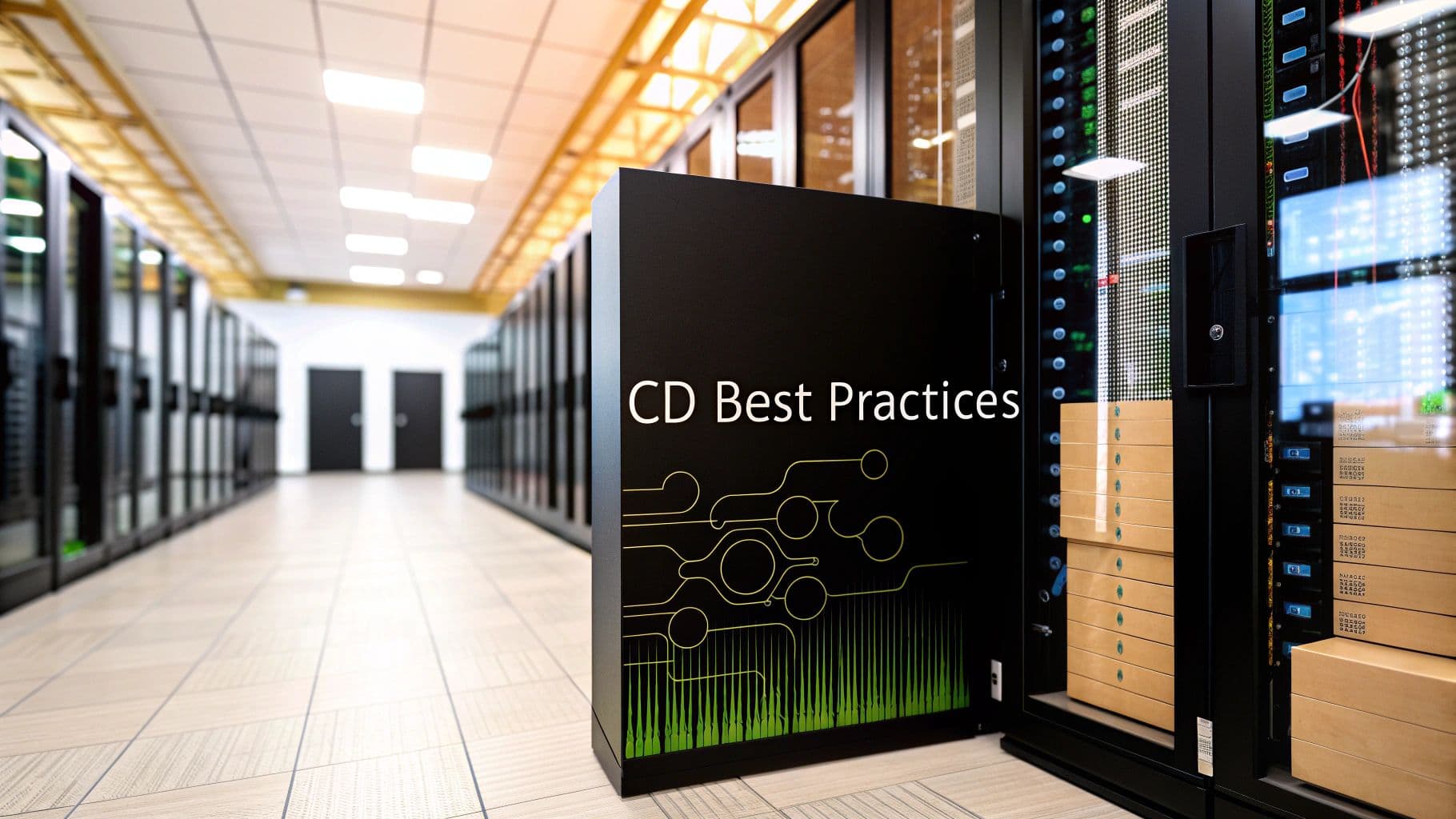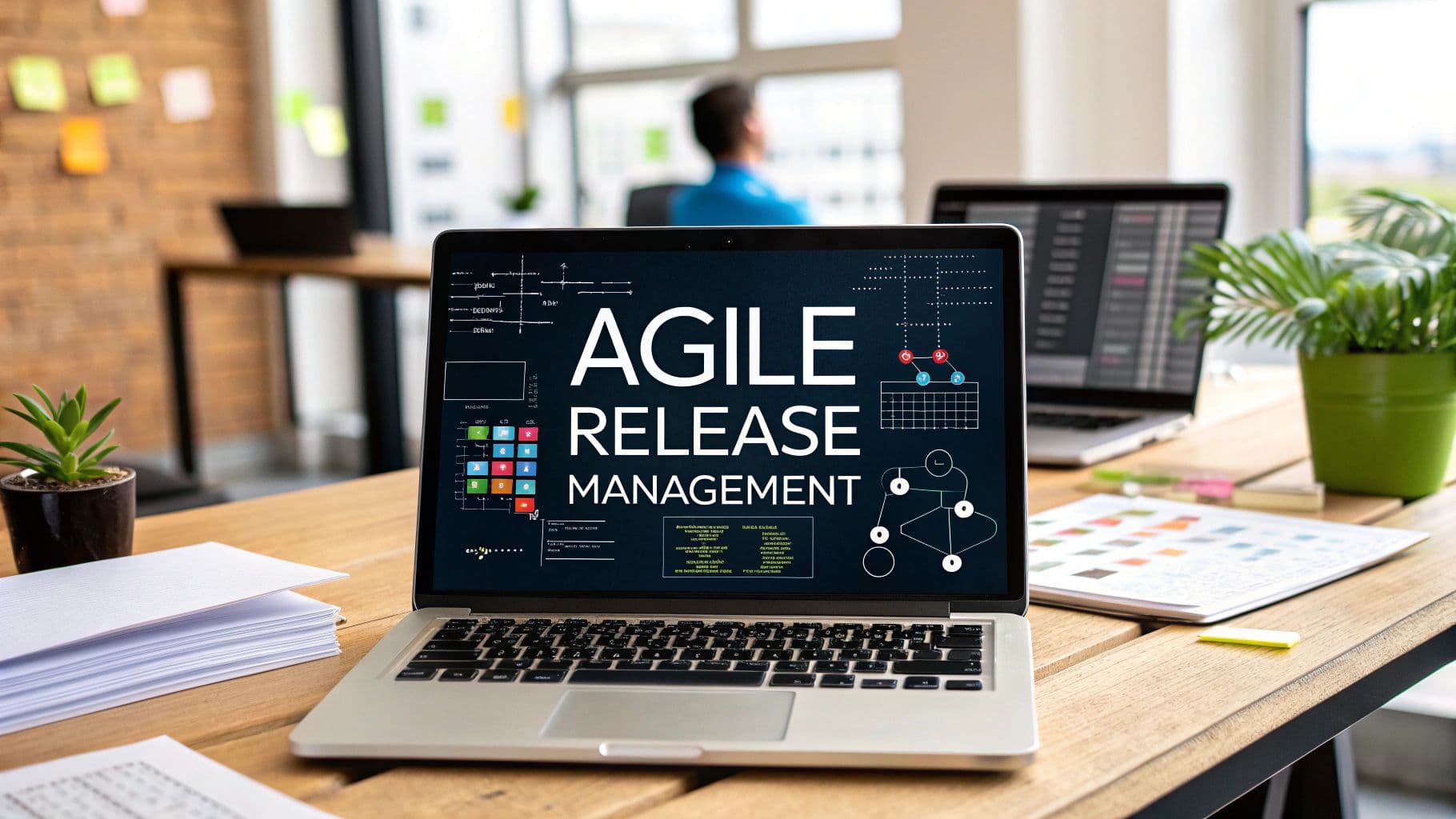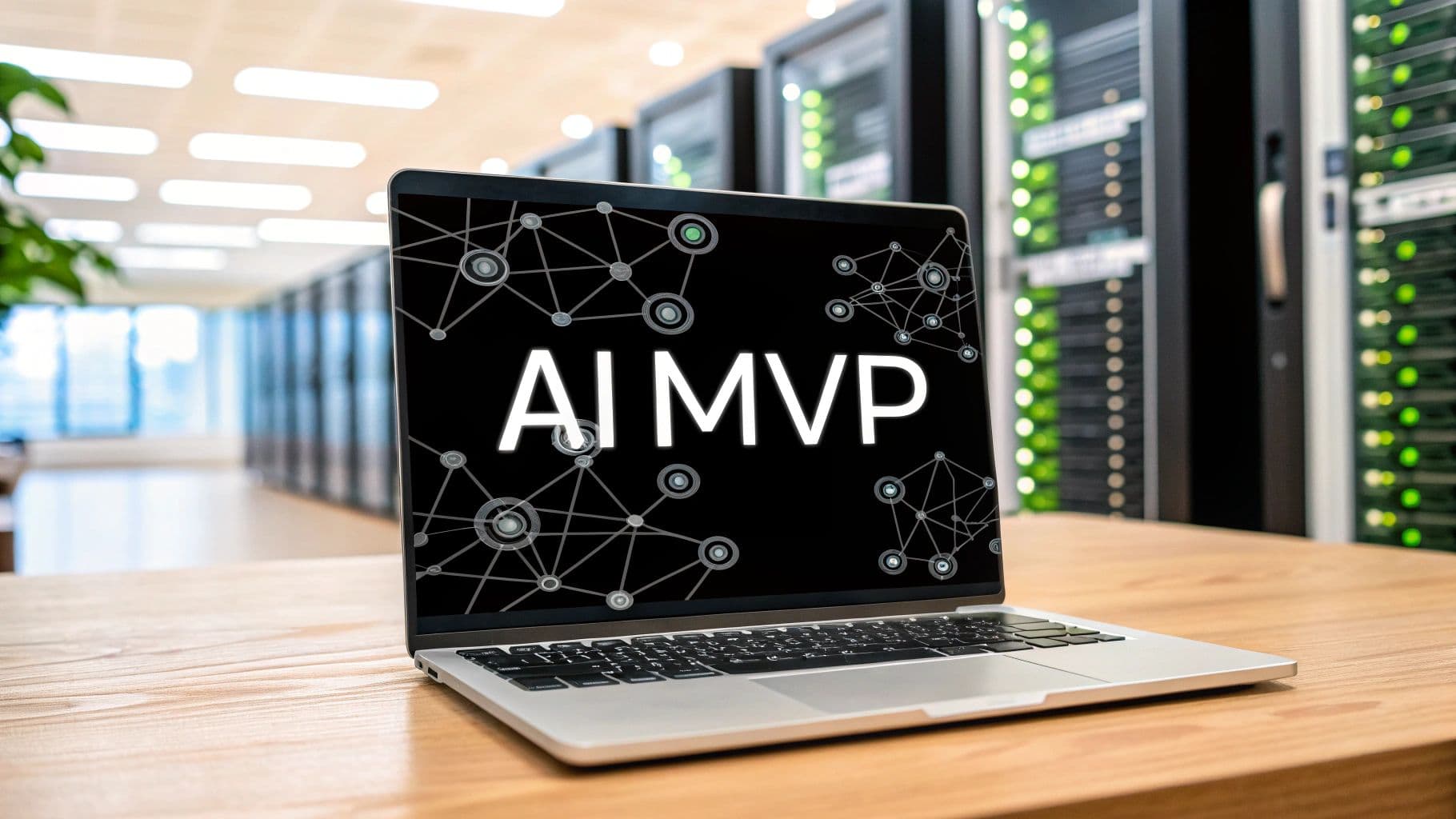continuous deployment best practices
DevOps
CI/CD Pipeline
Automated Deployment
Agile Development
7 Continuous Deployment Best Practices for 2025
In today's hyper-competitive market, the speed and reliability of software delivery are no longer just a technical advantage; they are a core business imperative. The ability to push new features, bug fixes, and improvements to users seamlessly and frequently is what separates market leaders from followers. This is the promise of Continuous Deployment (CD), an advanced software development practice where every code change that passes automated testing is automatically released to a production environment.
However, achieving this state of flow requires more than just a toolchain. It demands a disciplined approach grounded in proven strategies. While CD is a specific discipline, it builds upon a solid foundation of integrated processes. To truly realize its benefits, it's essential to implement robust CI/CD best practices across your entire development lifecycle, ensuring that integration and delivery work in harmony.
This article will guide you through the 7 essential continuous deployment best practices that elite engineering teams use to build robust, automated, and resilient delivery pipelines. By mastering these principles, you can transform your deployment process from a source of anxiety into a strategic asset, enabling rapid innovation while maintaining exceptional quality and stability. We will cover everything from automated testing and feature flags to advanced deployment patterns like blue-green and comprehensive observability.
1. Mastering the Safety Net: The Automated Testing Pipeline
The absolute cornerstone of any successful continuous deployment pipeline is a comprehensive, multi-layered automated testing strategy. Without a robust testing safety net, continuous deployment moves from a best practice to a high-risk gamble. This isn't about simply running a few unit tests; it's about building an intelligent, automated quality gate that provides the confidence needed to release changes on demand.
Why It's Foundational
Automated testing is the primary mechanism that enables speed without sacrificing stability. It shifts quality control from a manual, end-of-cycle bottleneck to an integrated, continuous process. This approach is fundamental to continuous deployment best practices because it catches bugs early in the development lifecycle when they are significantly cheaper and faster to fix.
By automating a cascade of tests, you empower developers to push changes with a high degree of confidence, knowing that a rigorous validation process is guarding the path to production.
Building Your Automated Testing Cascade
A mature pipeline layers different types of tests, each serving a distinct purpose and running at the appropriate stage to balance speed with thoroughness.
-
Unit Tests: These are the first line of defense. They are small, fast, and run with every commit, testing individual functions or components in isolation. For example, a unit test might verify that a
calculatePrice()function in an e-commerce app correctly applies a discount. Their speed provides near-instant feedback to developers. -
Integration Tests: After unit tests pass, integration tests ensure that different modules or services work together correctly. An example would be testing the interaction between your user authentication service and your order processing module, verifying that an authenticated user can successfully place an order.
-
End-to-End (E2E) Tests: This is the final validation stage. E2E tests simulate complete user journeys from start to finish. Using a framework like Cypress or Playwright, you could automate a test that mimics a user logging in, adding an item to their cart, proceeding to checkout, and successfully completing the purchase. These tests provide the ultimate assurance that the application functions as expected from the user's perspective.
2. Feature Flags and Progressive Rollouts
Moving beyond a simple "deploy or don't deploy" binary, feature flags (or feature toggles) introduce a powerful layer of control directly into your application's runtime. This technique decouples code deployment from feature release, allowing you to push new code to production that remains hidden from users until you are ready to activate it. This separation is a game-changer for risk management in a continuous deployment environment.

Why It's Foundational
Feature flags transform deployments from high-stress events into routine, low-risk operations. They provide a kill switch for new functionality, allowing you to instantly disable a problematic feature without a frantic rollback or a hotfix deployment. This level of control is essential for true continuous deployment best practices, enabling teams to ship smaller changes more frequently while minimizing the potential blast radius of any single release.
By using flags, you can progressively roll out features to specific user segments, gather real-world feedback, and validate performance before a full public launch.
Building Your Controlled Rollout Strategy
Implementing a feature flag system requires both a technical solution and a disciplined process. This strategy allows for sophisticated release patterns that go far beyond a simple on/off switch.
-
Canary Releases: With feature flags, you can first release a new feature to a very small, internal group of users (like your own team). For example, you could enable a redesigned checkout page only for users with a
@yourcompany.comemail address. This allows you to test in the production environment with minimal risk. -
Percentage-Based Rollouts: Once a canary release proves stable, you can progressively increase exposure. You might enable the feature for 1% of your user base, then 10%, then 50%, and finally 100%. Tech giants like Uber and Facebook use this method to roll out nearly every new app feature, monitoring for errors or negative metric impacts at each stage.
-
A/B Testing: Feature flags are a natural fit for A/B testing. You can serve different versions of a feature to different user segments and measure which one performs better against your key business metrics. For instance, you could test two different call-to-action buttons to see which one achieves a higher conversion rate, all managed through a feature flag platform like LaunchDarkly or Split.
3. Embracing Zero-Downtime Releases: Blue-Green Deployment
Blue-Green Deployment is a powerful release strategy that virtually eliminates downtime and significantly reduces the risk associated with deploying new code. It involves maintaining two identical, isolated production environments, traditionally named "Blue" and "Green," which allows for a seamless transition from an old version of an application to a new one.
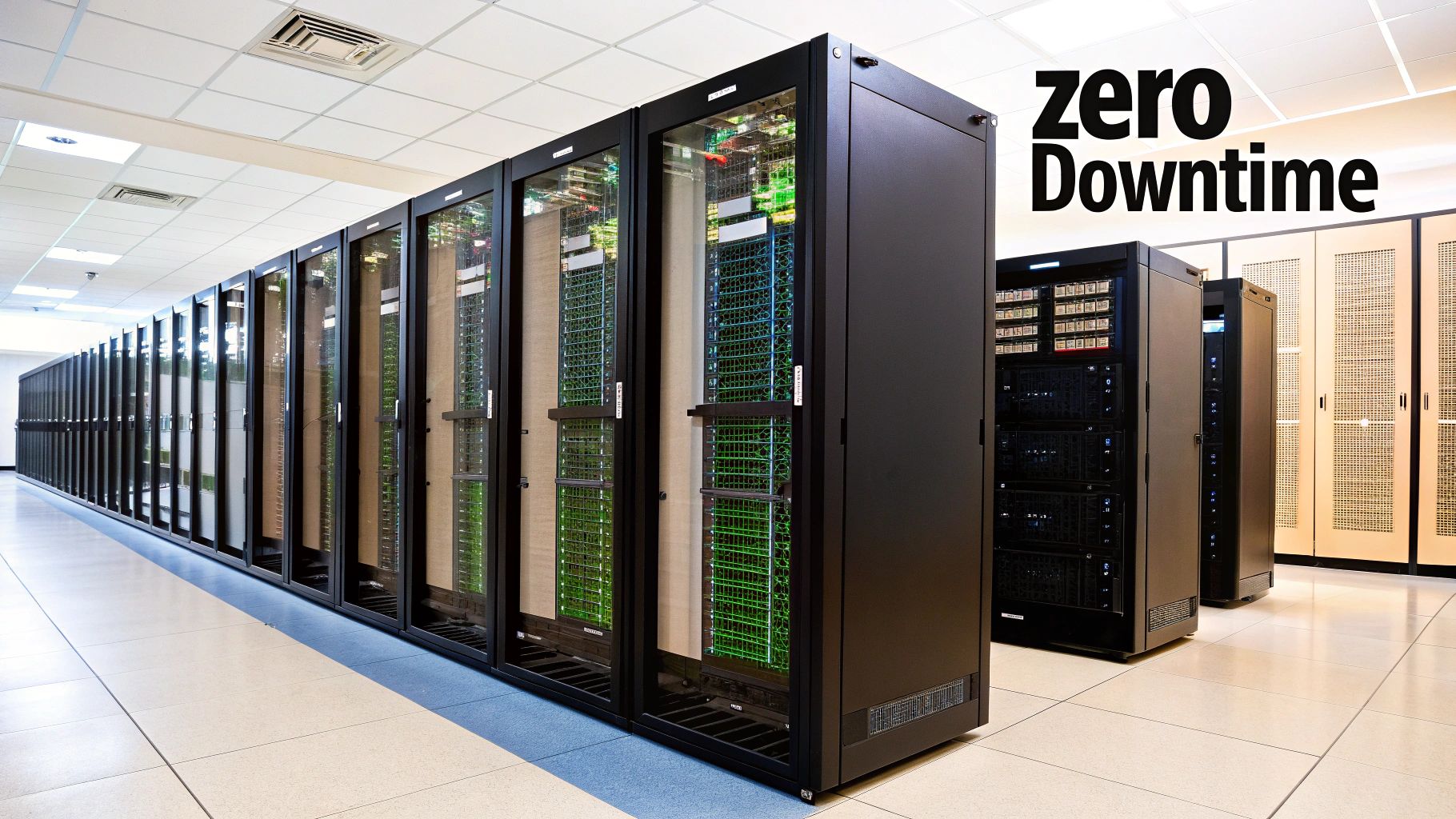
Why It's Foundational
This strategy is fundamental to advanced continuous deployment best practices because it provides a near-instantaneous rollback capability. If the live environment (let's say Blue) is serving user traffic, the new version of the application is deployed to the idle environment (Green). Once the Green environment is fully tested and verified, a router or load balancer simply switches traffic from Blue to Green. If any issues arise, traffic can be switched back to the stable Blue environment just as quickly, making for a low-stress, high-confidence release.
This method transforms deployments from high-stakes events into routine, non-disruptive operations, a core goal of continuous deployment. Major tech companies like Netflix and PayPal rely on this approach to ensure their critical services remain available during frequent updates.
Implementing Blue-Green Deployment Effectively
Successfully adopting this strategy requires careful planning and automation, particularly around environment management and data consistency.
-
Automate Environment Provisioning: The Blue and Green environments must be identical. Use Infrastructure as Code (IaC) tools like Terraform or AWS CloudFormation to automate the creation and configuration of these environments, ensuring consistency and preventing configuration drift.
-
Address Database Migrations: This is often the trickiest part. Your database must support both the old and new versions of the application simultaneously during the transition. Strategies include using backward-compatible schema changes or employing techniques like the expand-and-contract pattern to manage database evolution without downtime.
-
Implement Comprehensive Health Checks: Before switching the router to the new Green environment, run a comprehensive suite of automated tests, including smoke tests and health checks. These checks must validate not only that the application is running but also that it's functioning correctly and connecting to all its dependencies.
-
Practice Rollbacks: The ability to roll back is a key benefit, but it must be tested. Regularly practice the rollback procedure by switching traffic back to the old environment to ensure the process works flawlessly when you need it.
4. Comprehensive Monitoring and Observability
Deploying code is only half the battle; understanding its real-world impact is what separates good pipelines from great ones. This is where a holistic approach to monitoring and observability becomes indispensable. It's about moving beyond simple "server is up" checks to gaining deep, actionable insights into system health, performance, and user experience, especially during and immediately after a deployment.
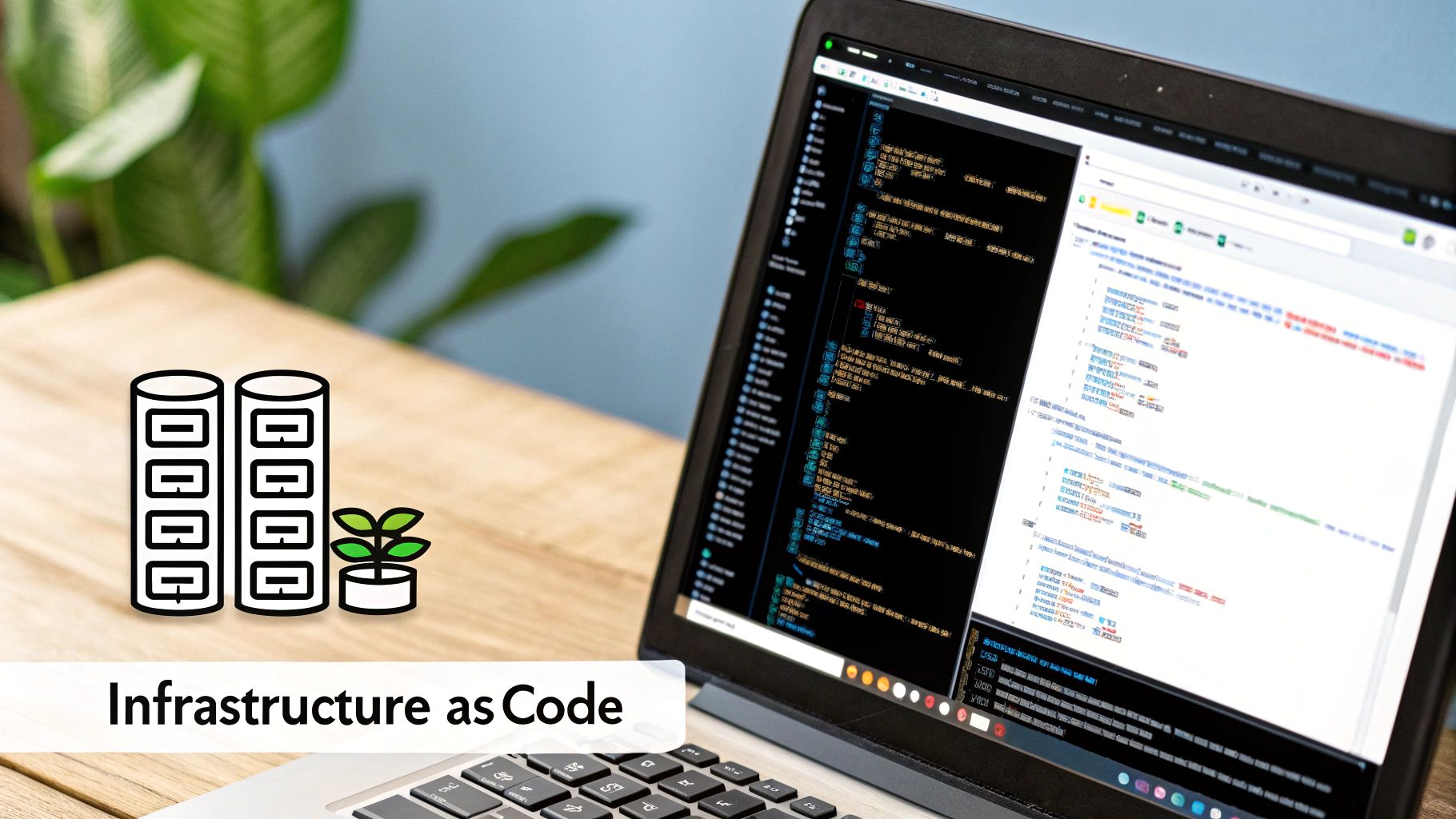
Why It's Foundational
Comprehensive observability provides the feedback loop necessary to validate a deployment's success or quickly detect its failure. Without it, you are flying blind, unaware of subtle performance degradations, new error spikes, or negative impacts on critical user journeys until customers report them. Integrating observability is a core tenet of continuous deployment best practices because it allows you to see the direct consequences of your changes in production, empowering you to make data-driven decisions about rollbacks or hotfixes.
Pioneered by teams like Google's SREs, this practice gives you the confidence to deploy frequently by ensuring you can rapidly diagnose and resolve any issues that arise.
Building Your Observability Framework
A mature observability strategy is built on the "three pillars," which work together to provide a complete picture of your application's behavior.
-
Metrics: These are time-series numerical data that let you see trends at a high level. For a deployment, you would track key metrics like request latency, error rates, and CPU utilization. A sudden spike in the error rate metric immediately following a release is a clear signal that something is wrong.
-
Logs: While metrics tell you that something happened, logs tell you why. These are timestamped, unstructured (or structured) text records of discrete events. If you see a spike in errors, you can dive into the application logs from that time period to find the specific error message and stack trace.
-
Traces: Traces provide the context for a request as it travels through a distributed system. They stitch together logs and performance data across multiple services to show the complete lifecycle of a single operation. For example, a trace could show that a slow API response is caused by a bottleneck in a downstream database query, a detail that would be nearly impossible to find with metrics or logs alone.
5. Infrastructure as Code (IaC)
Treating your infrastructure with the same rigor as your application code is a transformative step in modern software delivery. Infrastructure as Code (IaC) is the practice of managing and provisioning computing infrastructure through machine-readable definition files, rather than through manual processes or interactive tools. This approach eliminates configuration drift and ensures that every environment, from development to production, is consistent, repeatable, and version-controlled.
Why It's Foundational
Manual infrastructure management is a primary source of deployment failures. It's slow, error-prone, and nearly impossible to replicate perfectly across multiple environments. IaC is fundamental to continuous deployment best practices because it turns infrastructure provisioning into a predictable, automated part of your pipeline. Instead of a sysadmin clicking through a console, your deployment script simply runs a command to create, update, or destroy infrastructure based on a code definition.
By codifying your infrastructure, you can review, test, and version it just like application code. This provides a clear audit trail and makes collaboration between development and operations teams seamless.
Building Your Codified Infrastructure
Adopting IaC involves choosing a tool and gradually codifying your resources, integrating the process directly into your CI/CD pipeline.
-
Define Your Resources: Start by defining your infrastructure using a tool like Terraform, AWS CloudFormation, or Pulumi. For example, a simple Terraform file (
main.tf) could define an AWS EC2 instance, specifying its size, the operating system image, and associated security groups. This declarative file becomes the single source of truth for that resource. -
Version and Review: Commit your infrastructure code files to your Git repository. This allows you to use pull requests to review and approve infrastructure changes before they are applied. This peer-review process catches potential configuration errors and enforces security standards, such as ensuring a database is not publicly exposed.
-
Automate in the Pipeline: Integrate IaC commands into your continuous deployment pipeline. After your application code is built and tested, a pipeline stage can execute
terraform applyor a similar command to ensure the target environment's infrastructure matches the committed code definition. This guarantees that your application is always deployed to a correctly configured environment, dramatically reducing "it works on my machine" issues.
6. Evolving the Core: Zero-Downtime Database Migration Strategies
As applications evolve, their underlying data structures must evolve too. Mishandling database schema changes is a common cause of catastrophic deployment failures, leading to downtime and data corruption. A zero-downtime database migration strategy is a non-negotiable component of mature continuous deployment, allowing you to alter your database schema without taking the application offline.
Why It's Foundational
Database changes are often the most high-stakes part of any release. Without a systematic approach, you're forced into lengthy maintenance windows or risky "big bang" updates. Implementing a zero-downtime strategy is a core tenet of continuous deployment best practices because it decouples database evolution from application deployment, ensuring data integrity and constant availability.
This approach transforms the database from a deployment bottleneck into a flexible, evolving asset. Companies like Shopify and Stripe rely on these techniques to continuously update their platforms, which handle immense traffic and sensitive financial data, without interrupting service.
Building Your Migration Workflow
A robust migration strategy focuses on incremental, backward-compatible changes that can be deployed and even rolled back safely.
-
Expand and Contract Pattern: This is the safest way to modify schemas. First, you expand by making additive changes. For example, to rename a column, you first add the new column, run both in parallel while migrating data, and then later contract by removing the old column in a separate deployment once it's no longer in use. This ensures the old and new versions of your code can coexist.
-
Leverage Migration Tools: Don't reinvent the wheel. Tools like Flyway or Liquibase are purpose-built for this. They version-control your database schema, allowing you to track, manage, and automate migrations as part of your deployment pipeline, ensuring every environment is consistent.
-
Test Migrations Rigorously: Database migrations must be tested just like application code. This includes running them in a staging environment that is a close replica of production. Test both the migration (the "up" script) and the rollback (the "down" script) to ensure you can recover from a failure without data loss. For a deeper dive into this, you can learn more about our database migration checklist.
7. Security Integration (DevSecOps)
Shifting security to the left, known as DevSecOps, transforms security from a final-stage gatekeeper into an integrated, automated component of the entire deployment lifecycle. Instead of treating security as an afterthought, this approach embeds it directly into the development and operations workflow. This ensures that every code change is automatically vetted for vulnerabilities before it ever reaches production.
Why It's Foundational
In a high-velocity continuous deployment environment, manual security reviews are an impossible bottleneck. Integrating security directly into the pipeline is a critical continuous deployment best practice that allows teams to maintain speed without introducing unacceptable risks. It automates the process of identifying and mitigating vulnerabilities, making security a shared responsibility rather than the sole domain of a separate team.
By automating security checks, you empower your pipeline to act as a vigilant guard, automatically stopping deployments that fail to meet security standards. This proactive stance is essential for protecting your application, your data, and your users' trust.
Building Your Automated Security Gates
A mature DevSecOps practice layers different automated security tools at various stages of the pipeline, providing comprehensive protection.
-
Static Application Security Testing (SAST): This is your first line of defense, integrated early in the CI process. SAST tools scan your source code for known vulnerability patterns, like SQL injection or cross-site scripting, before the application is even compiled. For example, a tool like SonarQube or Snyk can be configured to scan every new branch, providing developers with immediate feedback within their development environment.
-
Software Composition Analysis (SCA): Modern applications are built on open-source dependencies, each a potential vector for attack. SCA tools automatically scan your project's dependencies against databases of known vulnerabilities. An SCA tool integrated into your build process could, for instance, detect a vulnerable version of a popular library like Log4j and automatically fail the build, preventing the vulnerability from ever being deployed.
-
Dynamic Application Security Testing (DAST): DAST tools test your running application in a staging or testing environment, simulating external attacks to find vulnerabilities that only appear at runtime. An example would be an automated DAST scan that probes a deployed test instance for security misconfigurations or exposed API endpoints, providing a real-world assessment before a production release. You can explore a variety of advanced security strategies for your business and learn more about cyber security solutions on anotherwrapper.com.
Continuous Deployment Best Practices Comparison
| Item | Implementation Complexity 🔄 | Resource Requirements ⚡ | Expected Outcomes 📊 | Ideal Use Cases 💡 | Key Advantages ⭐ |
|---|---|---|---|---|---|
| Automated Testing Pipeline | High - multi-stage setup, maintenance needed | Moderate to High - infrastructure for tests | High quality code, early bug detection | Teams seeking fast, reliable testing before production | Early bug catch, faster releases, reduces manual errors |
| Feature Flags and Progressive Rollouts | Medium - added conditional logic, lifecycle management | Low to Moderate - flag management platforms | Controlled feature releases, safe rollbacks | Gradual feature rollout, A/B testing, instant rollbacks | Safe incomplete feature deployment, experimentation |
| Blue-Green Deployment | High - duplicate environments, complex sync | High - double infrastructure, DNS/load balancers | Zero downtime deployments, instant rollback | Mission-critical live deployments requiring uptime | True zero downtime, environment isolation |
| Comprehensive Monitoring and Observability | High - setup of metrics, logs, traces, alerts | High - tooling and infrastructure for data handling | Rapid issue detection, data-driven decisions | Large systems needing continuous health and performance | Faster incident response, system reliability |
| Infrastructure as Code (IaC) | High - learning curve, templates and tooling | Moderate - automation servers and version control | Consistent, repeatable infra, reduced configuration errors | Teams managing cloud infrastructure at scale | Version-controlled infra, reduced manual errors |
| Database Migration Strategies | High - phased migrations, coordination complexity | Moderate - testing and rollback tools | Zero downtime schema changes, data integrity | Applications with evolving databases needing zero downtime | Safe schema evolution, automated deployment |
| Security Integration (DevSecOps) | Medium to High - integrates security tools/policies | Moderate - security tools and scanning infrastructure | Early security issue detection, automated compliance | Organizations needing built-in security and compliance | Early security fixes, reduces deployment delays |
The Path Forward: From Best Practices to Business Value
Adopting the seven continuous deployment best practices outlined in this guide is a transformative journey, not just a technical checklist. It signifies a fundamental cultural shift from treating deployments as high-risk, all-hands-on-deck events to embracing them as a routine, low-risk, and strategic part of the software development lifecycle. By mastering these principles, you move beyond simply shipping code faster; you begin to deliver value to your users with unparalleled speed and reliability.
Weaving a Web of Resilient Deployment
The true power of these practices emerges when they are woven together into a cohesive strategy. Think of it not as a list of isolated tasks, but as an interconnected system that creates a virtuous cycle:
- Automated Testing pipelines provide the confidence to deploy frequently.
- Feature Flags and Progressive Rollouts give you the control to release safely to production.
- Blue-Green Deployments offer a safety net, making rollbacks instantaneous and painless.
- Comprehensive Observability acts as your real-time feedback mechanism, telling you how your changes are performing.
- Infrastructure as Code ensures your deployment environments are consistent, repeatable, and version-controlled.
- Strategic Database Migrations prevent data-related deployment failures.
- Integrated Security (DevSecOps) builds a secure foundation, protecting your application and users from the start.
This integrated approach builds a powerful flywheel effect. Faster, safer deployments lead to quicker feedback loops from real users. This feedback, in turn, informs better product decisions, which are then rapidly delivered through the same efficient pipeline. The ultimate goal is to drastically reduce the lead time for changes, enabling your business to respond to market demands and user needs with genuine agility.
From Technical Excellence to Tangible Value
While the initial investment in tooling, training, and process re-engineering can be significant, the long-term payoff is immense. A mature continuous deployment pipeline delivers concrete business advantages, including increased developer productivity, vastly improved system reliability, and a stronger, proactive security posture. This operational excellence becomes a durable competitive advantage. It also creates a more robust and valuable technology asset. Ultimately, adopting these continuous deployment best practices not only streamlines your development process but also builds a strong foundation that will stand up to scrutiny, as detailed in guides like this on how to do technical due to diligence on a SaaS startup.
The path to elite deployment performance is built one practice at a time. Start small. Pick one area from this list that represents your biggest bottleneck or risk. Automate it, measure the impact, and then iterate. Your journey toward truly continuous deployment starts now.
Ready to implement these best practices without starting from scratch? AnotherWrapper gives you a head start with a production-ready AI starter kit that has CI/CD and automated deployment principles built-in. Skip the setup and focus on what matters most: building and deploying your product with confidence.
Fekri

